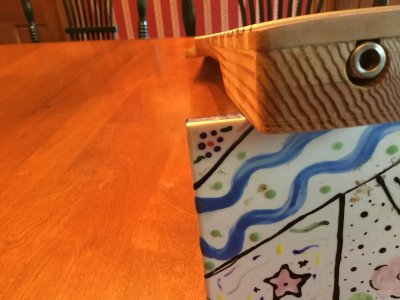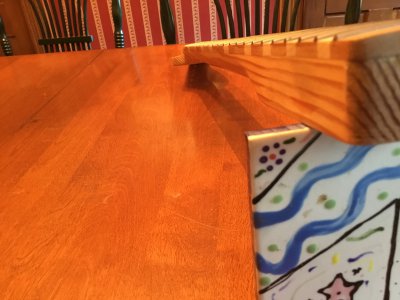Wouldn’t you want to use position as your controlled variable, so variation in the fits of the frets doesn’t cause variation in their installed height after using force as the controlled variable?
-
Welcome back Guest! Did you know you can mentor other members here at H-M? If not, please check out our Relaunch of Hobby Machinist Mentoring Program!
You are using an out of date browser. It may not display this or other websites correctly.
You should upgrade or use an alternative browser.
You should upgrade or use an alternative browser.
Torque wrench for arbor
- Thread starter Maplehead
- Start date
Hello, I'm not following on what you said. You'll have to dumb it down a bit for me. When you say position do you mean the height at which I press in a fret? Are you saying press one fret in and then measure its height and then use that as the height to press in all the rest of the frets? If so then I don't know if I can do that. I figured the closest way to doing something like that would be to establish a consistant amount of pressure for each fret pressed in.Wouldn’t you want to use position as your controlled variable, so variation in the fits of the frets doesn’t cause variation in their installed height after using force as the controlled variable?
I suppose it depends on the thickness of the neck. If it varies, which I suppose it will, then you can’t go to a consistent finishing position of the press handle. What about a spacer on either side of the fret, such that the press hits the spacers to define a finish position?
Are the grooves a uniform depth? Where does the variability come from currently? Seems like once the fret bottoms out, it would be tough to go deeper.
Are the grooves a uniform depth? Where does the variability come from currently? Seems like once the fret bottoms out, it would be tough to go deeper.
- Joined
- Nov 26, 2017
- Messages
- 1,532
From what little I know about building guitar, but have some friends that play and one that build the cigar box guitars. The critical thing is the height of the frets, which allows for consistent pressure onto the frets.
The issue with using a torque wrench to get consistency, you are pushing the frets into a groove in wood and wood is not consistent in density and you cannot be sure of the consistency of the groove that you will press them into.
I would use a spacer between the neck and the press fret tool. This can be fashioned very easily and does not need to be attached to the press.
The issue with using a torque wrench to get consistency, you are pushing the frets into a groove in wood and wood is not consistent in density and you cannot be sure of the consistency of the groove that you will press them into.
I would use a spacer between the neck and the press fret tool. This can be fashioned very easily and does not need to be attached to the press.
How about hanging a barbell weight plate or kettebell weight on the end of your arbor handle. First you will need to figure/calculate out how much weight you will need to apply desired force/torque.
There are many explanations of how to calculate force applied to a lever, such as below.
http://ecampus.matc.edu/mihalj/scitech/unit1/levers/levers.htm
There are many explanations of how to calculate force applied to a lever, such as below.
http://ecampus.matc.edu/mihalj/scitech/unit1/levers/levers.htm
- Joined
- Jan 2, 2018
- Messages
- 606
Seems to me that you could get a torque wrench( I recommend a sturtevant beam type) and test it on the appropriate wood. The fret board is the same wood the whole length so other factors are how clean your slot is milled . If you find different woods need different pressure you could adjust accordingly.
Most finger(fret) boards are super high quality wood and quite dense, i.e. rosewood, ebony so less problems with consistency. You would need to find approximately how many ft-lbs or inch-lbs of torque so you can get the proper rated torque wrench.
Most finger(fret) boards are super high quality wood and quite dense, i.e. rosewood, ebony so less problems with consistency. You would need to find approximately how many ft-lbs or inch-lbs of torque so you can get the proper rated torque wrench.
Hi All and thanks for your replies. Yes, I am dealing with wood and wood can and does have its inconsistancies. I personally think the main inconsisitancy here is with me in the pressure I assert when installing a fret, hence the reason for me thinking I should apply a torque wrench into the mix. I wonder how the mass produced big guitar companies do it. When you look down along the length of the neck and see the ends of the frets, their necks are basically a perfect line. With mine, which are hand made, it's like slight rolling. I think when I press in a fret some go deeper into the wood than others, creating the rolling effect. It may be because the wood in some areas is less dense than other areas, or me pressing harder or lighter, but whatever it is it's something I really want to rectify. The pics here aren't great. Hopefully you can see what I am talking about.


